This post may contain affiliate links to things like tours, hotels, Amazon associates and products. These help me earn a small commission at no additional charge to you.
Namibia part two…
By the time my fourth day in Namibia rolled around, I was already loving the country. There hadn’t been a lot to see in capital, Windhoek, but Etosha National Park had been incredible, and had brought us the final piece of our big five puzzle – a rhino – fairly quickly into our Africa overland tour! Read the full blog here.
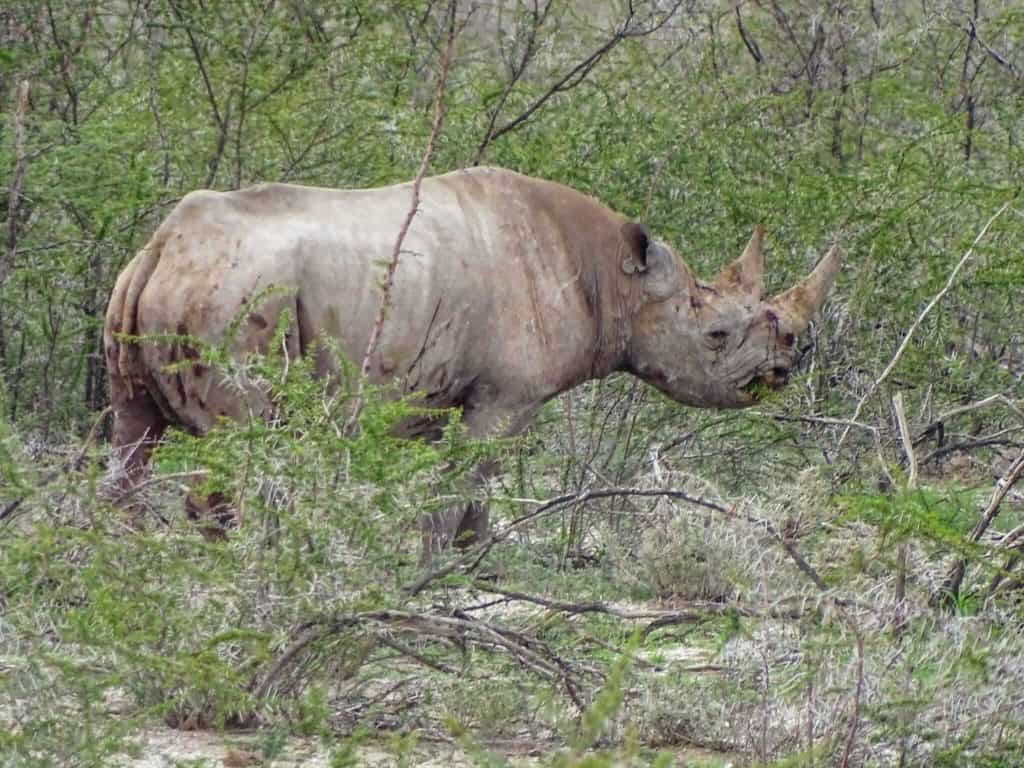
After leaving Etosha, we began to journey through sandy Damaraland. The Namibian countryside is one of the world’s oldest and most unchanged places – the rock formations and landscape look very much as they would have done thousands of years ago. The dusty roads seemed to stretch on forever, and made for some cool photos.
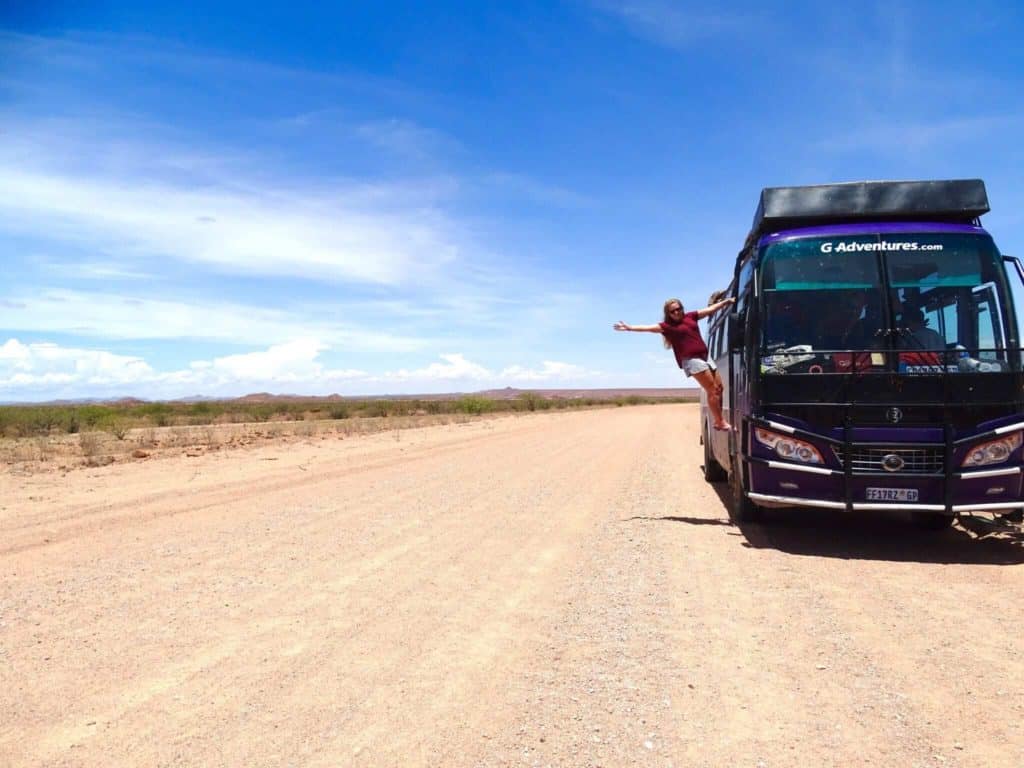
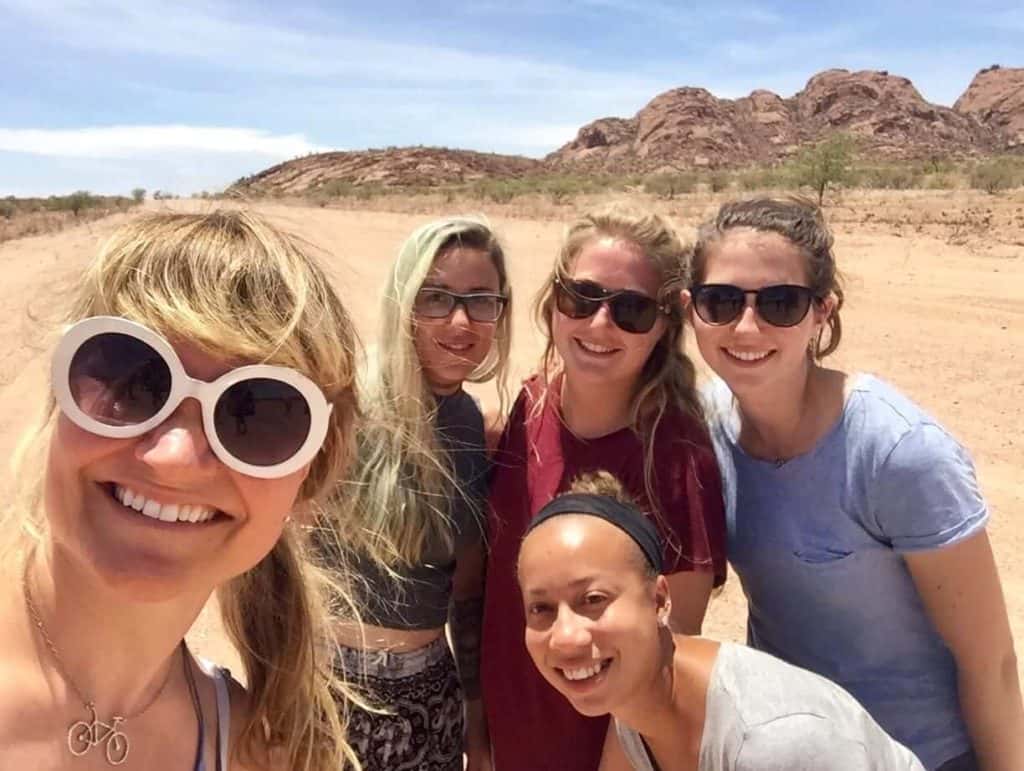
Damara Living Museum
En route to our Damaraland campsite, we stopped at a living museum where local people illustrate how life would have once been for people in the region.
I automatically liked the honesty of this concept. So often in Africa we’ve ended up in local village set-ups where the people try and fail to start a fire from scratch and attempt to give the impression that the way people lived in the past is the way they still live today – for example the Masaai tribes we met in Tanzania.
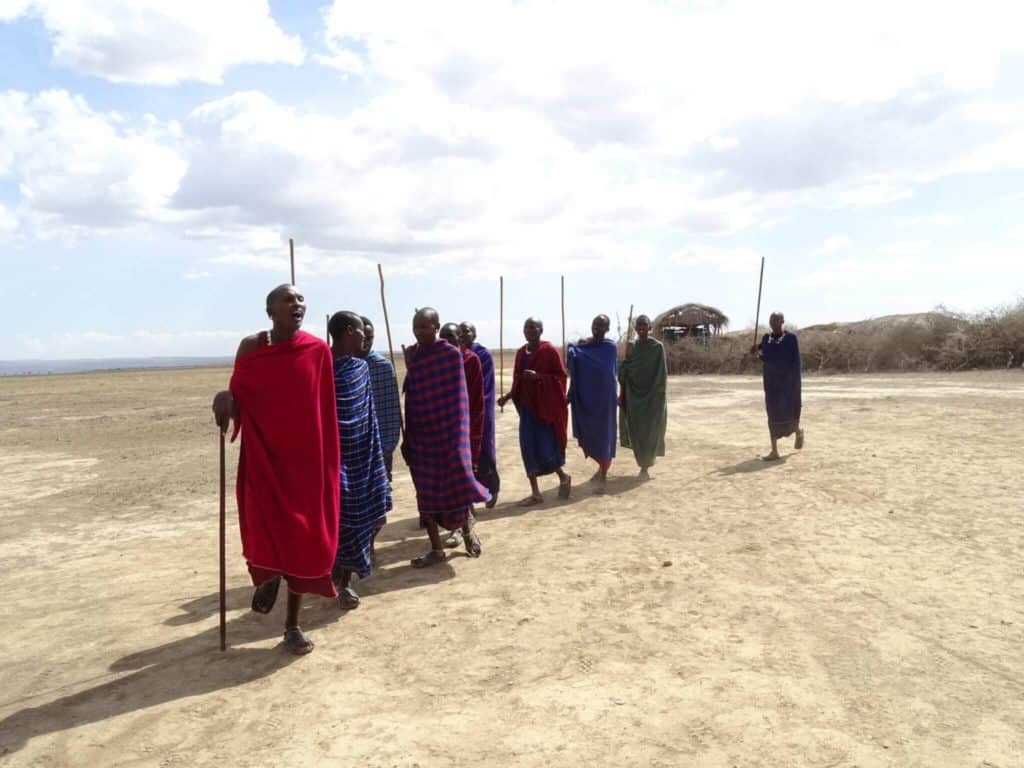
I get it – tourists like cultural comparison. It’s less to write home about to see local villagers on their iPhones. Cultural dances and local dress make money, and that’s a necessity. It’s not surprising that a lot of the village experiences are exactly that: an experience set up for you and not a representation of how people really live in the modern day.
So for me, the Damara Living Museum was a good compromise. We saw a tribal dance, they started a fire, told us about the ways traditional people lived, and even smeared our faces with a red rock paste. It wasn’t kept a secret that nowadays most of the people live in a nearby town and have access to electricity and basic amenities.
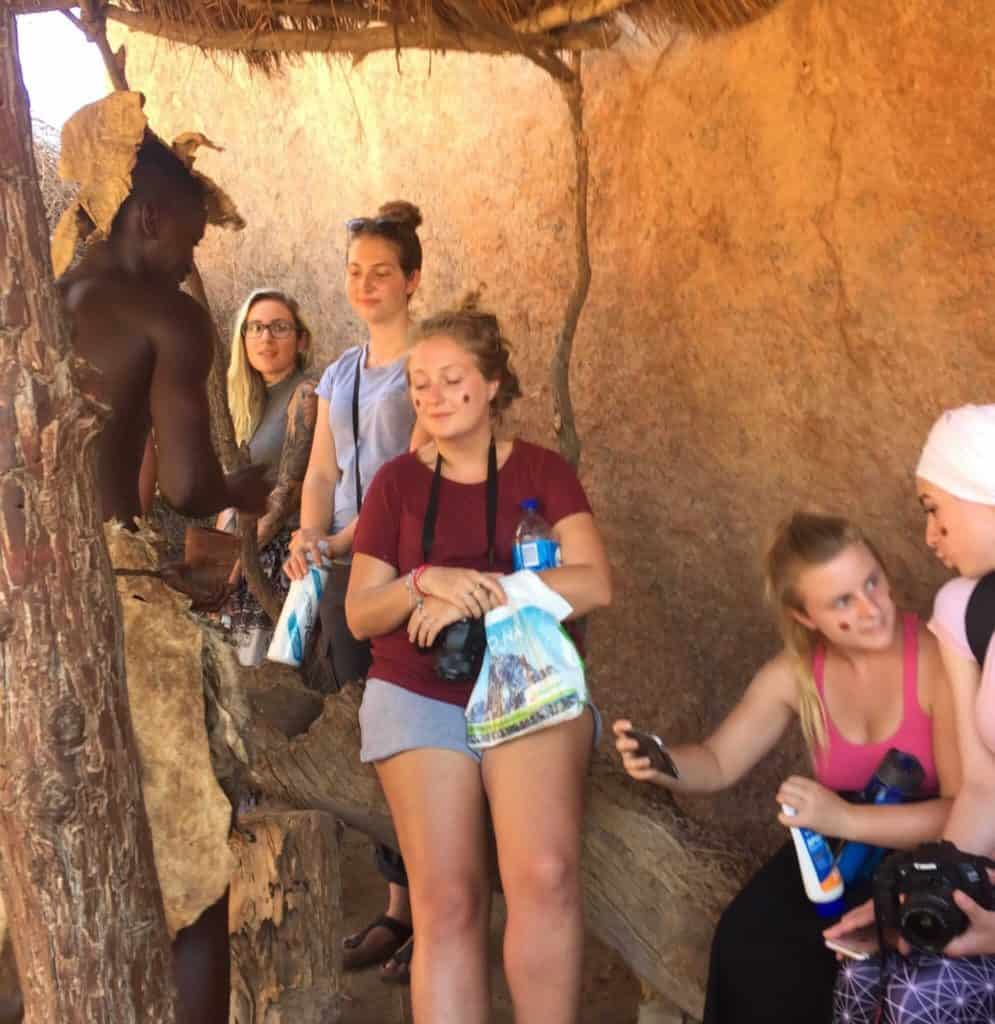
I loved listening to the locals speak in their native Bantu language, one containing distinctive clicking noises. There were all different types – the noise of your tongue on the roof of your mouth, the noise of your tongue on your teeth, the noise of your lips together. Most sentences have many thrown in and the locals mix them in with their speech at a crazy speed and don’t miss a beat!
Rock carvings
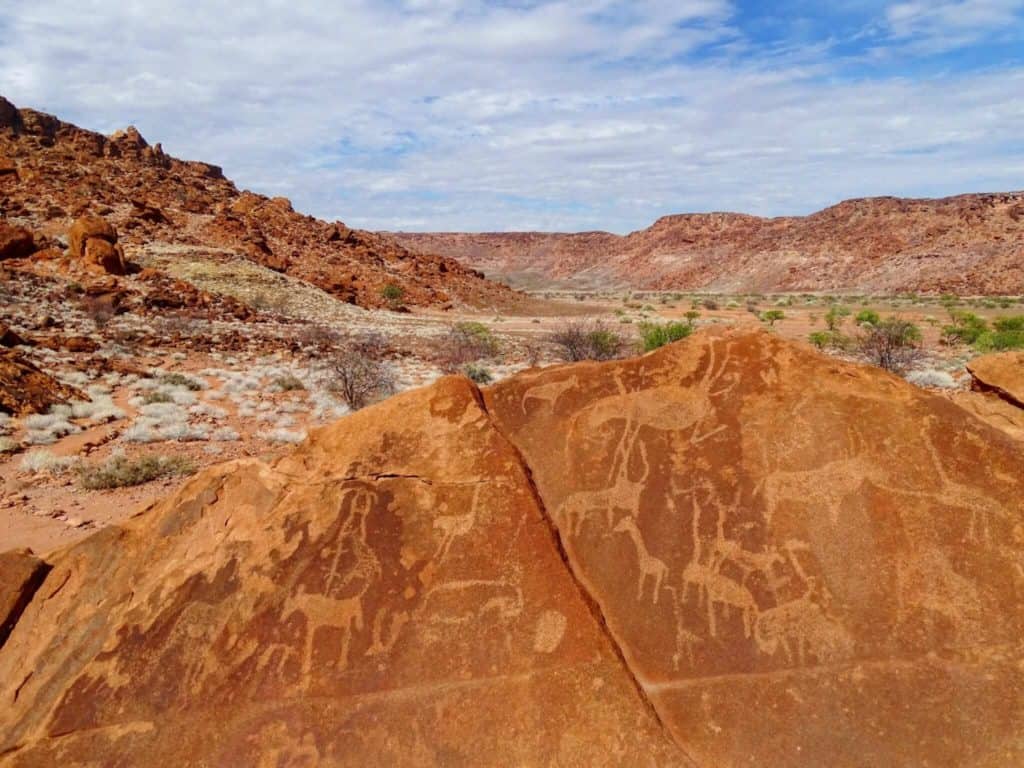
After a night at camp, we headed towards Spitzkoppe, a striking area where we’d be sleeping under the cliffs and stars. En route, we stopped to check out some ancient rock carvings.
Our guide for the rock carving walk, Elizabeth, took us towards the site of the drawings. It was a boiling hot day so even the short walk and a couple of sets of stairs up to the artwork had us all sweating! There’s absolutely no shade in the desert, which Namibia was teaching us the hard way.
But the carvings made up for it. How interesting are these?
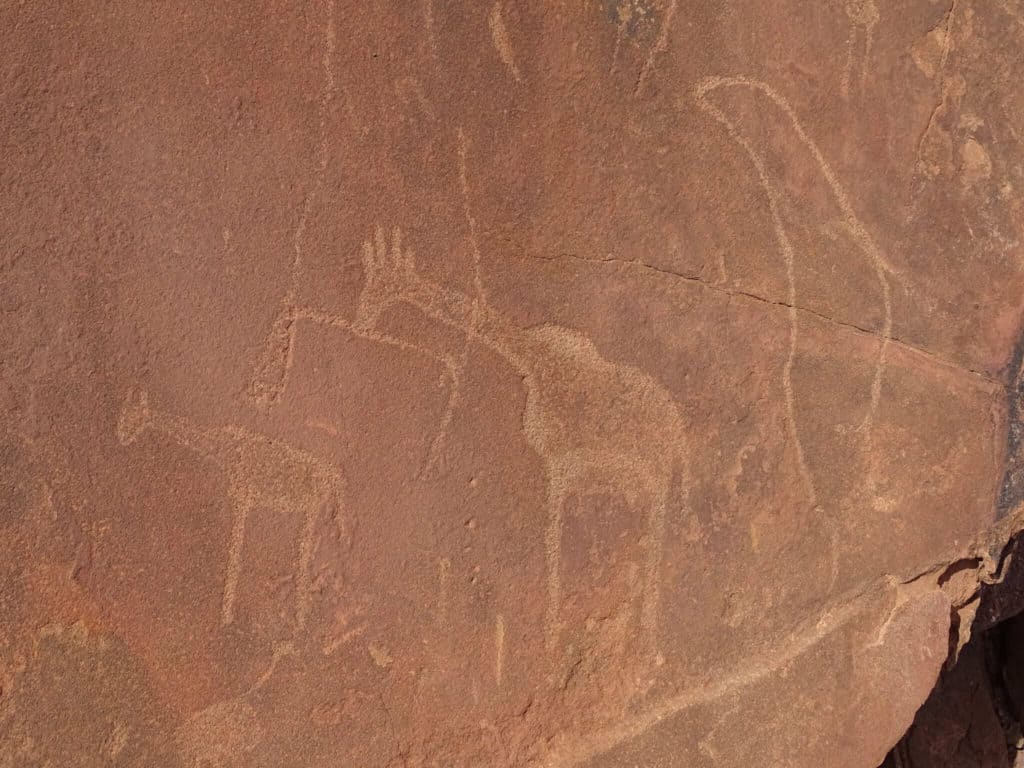
Most of them show animals – as you can see – like giraffe and buffalo. Elizabeth told us that ancient people probably used the rock faces as a kind of classroom, to educate other people about the different types of animals in the region. They could also have been used as a warning board – for example if lions were routinely seen in the area, the engravings would let others know about potential dangers.
Apparently, the carvings are anywhere between 2000 and 6000 years old, but they were so clear you’d believe they’d been carved last week.
It wasn’t just the carvings that mesmerised me but the whole dry and golden area – I took the chance to admire my surroundings, and pose for a few pictures, naturally!
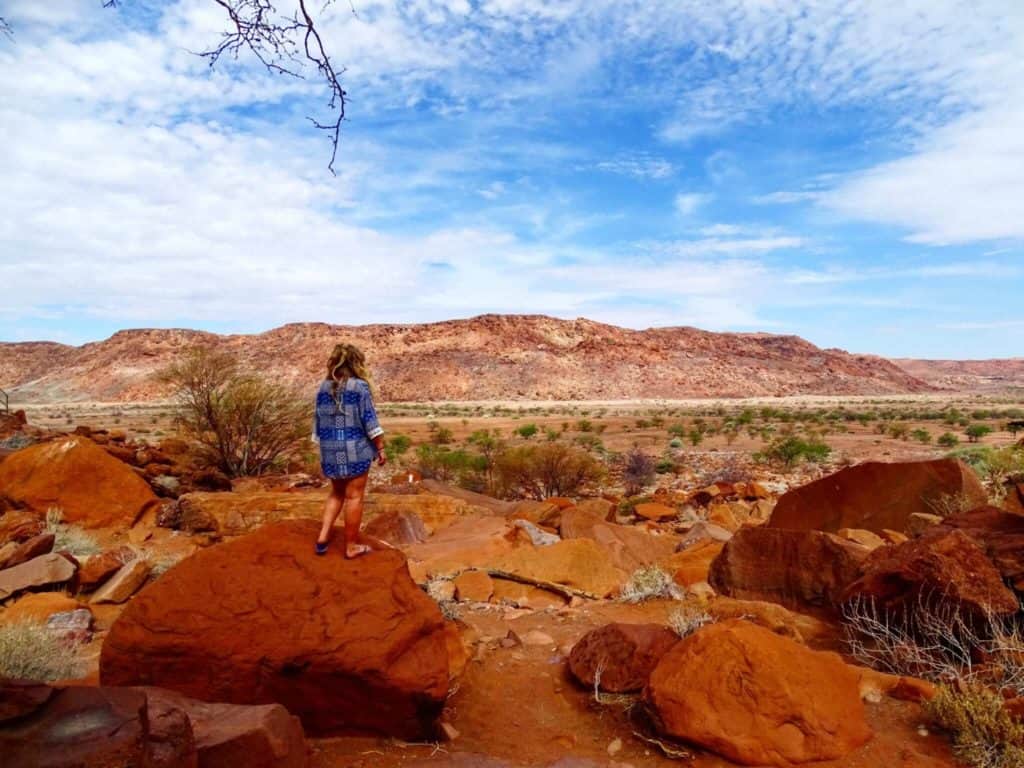
Spitzkoppe
On day 34 of our tour from Kenya to Cape Town, we arrived at Spitzkoppe, arguably one of the most beautiful destinations I’ve ever been to. To give you an idea of the countryside in this region, it’s flat, flat, flat… then with a sudden crazy cliff formation standing high like a skyscraper in the middle of it all!
Apparently, it’s all to do with tectonic plates and land that was pushed up when Africa separated from South America. Seriously striking!

That night we stayed at one of our most basic campsites, with no running water or electricity, and just one long drop toilet in virtually the middle of nowhere. Luckily we were seasoned campers by this point and could deal without a shower for one evening.
We arrived late in the afternoon and, after setting up our tents, the main activity for the evening (ok the only activity – the middle of nowhere is hardly action packed!) was to climb the cliffs our campsite was nestled underneath.
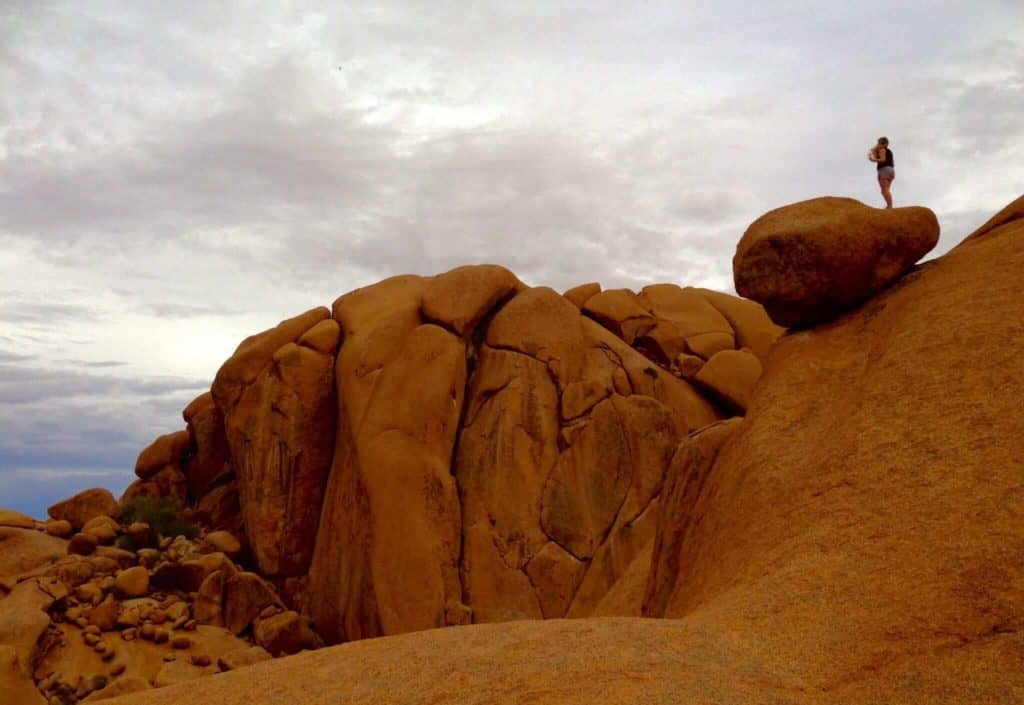
The climb wasn’t too taxing but there were a couple of steep bits where you basically had to pull yourself up onto a level that had seconds before been at your head height. As usual, I handled a physical challenge with poise, skill and natural sporting talent… In my dreams!
Luckily, we made it to the top for sunset. Without a doubt one of the best I’ve ever seen! The sky turned all number of colours, starting pink before going a deep red, and finally to a blackish blue. While we wanted to see it out, we didn’t want to be climbing down in the pitch black, so left just in time.
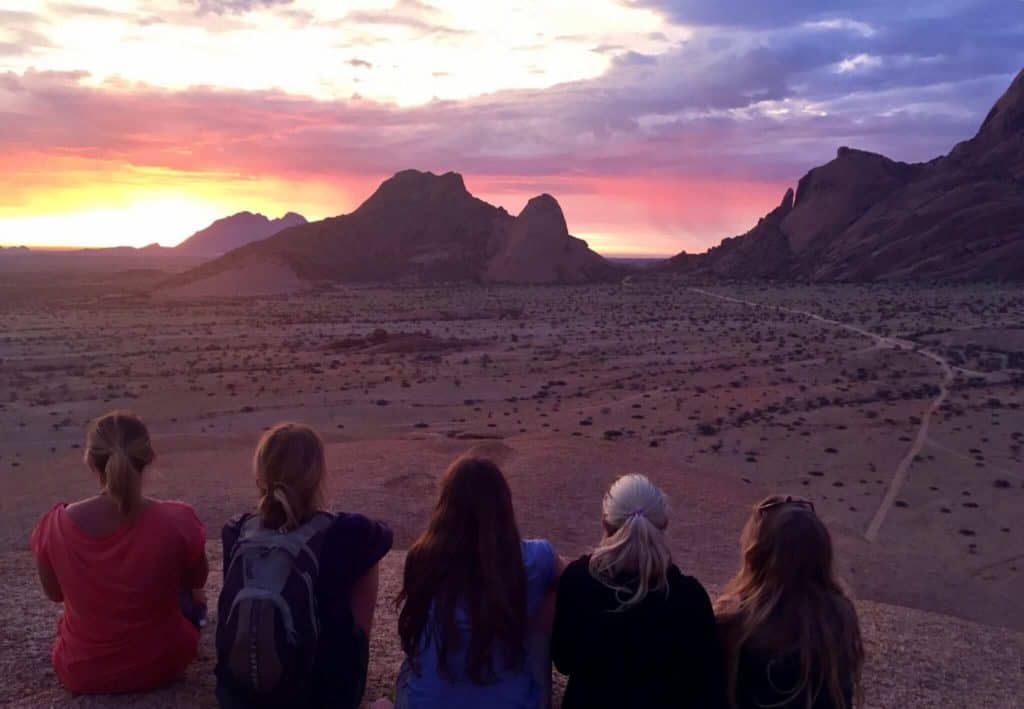
It was dinner and beers around the campfire (our usual evening routine) before bed and our standard early start. We still had Swakopmund (the adrenaline capital), the Namib Desert and Fish River Canyon to look forward to.
Thanks for reading!
- Exploring Nairobi and meeting my tour
- First few days and Serengeti safari, Tanzania
- Zanzibar island, Tanzania
- Lake Malawi by horseback
- Tracing my family history in Zambia
- On safari in Zambia
- Halfway point at Victoria Falls, Zimbabwe
- Our week in Botswana
- Arriving in Namibia and spying rhinos in Etosha
- Damaraland, rock carvings and sunsets in Namibia
- Adrenaline activities in the Namib desert (NEXT)
- Dune 45, Sossusvlei and Fish River Canyon, Namibia
- Wine tasting, South Africa and saying goodbye
See you next time for more adventures,
